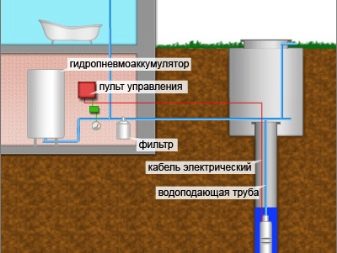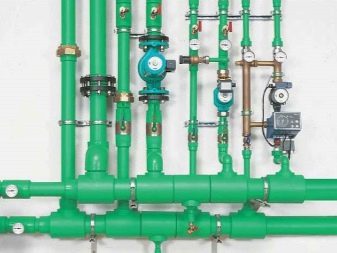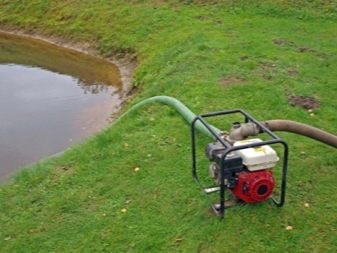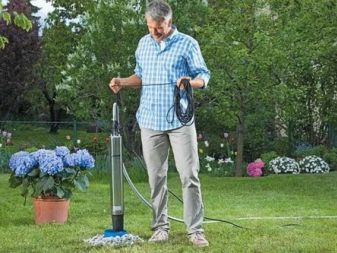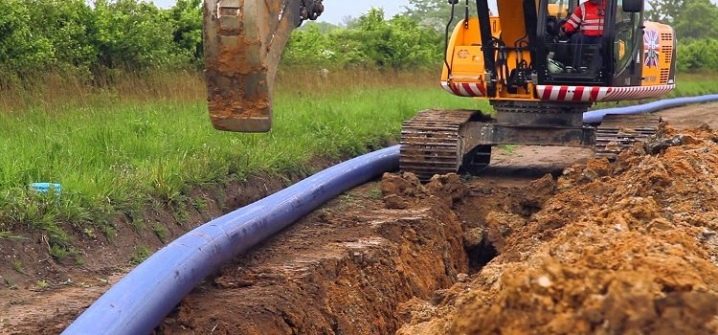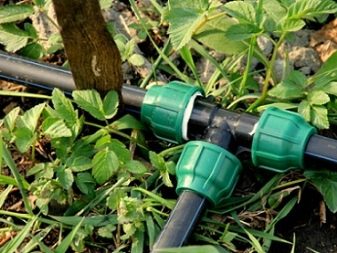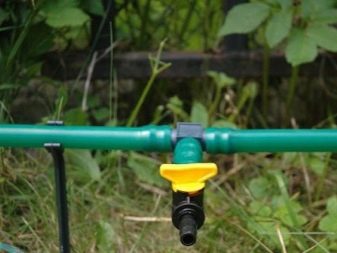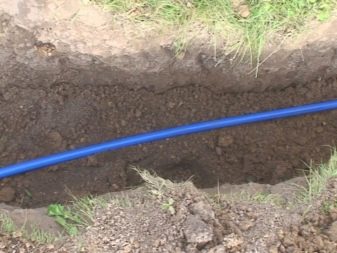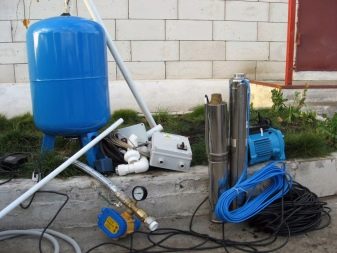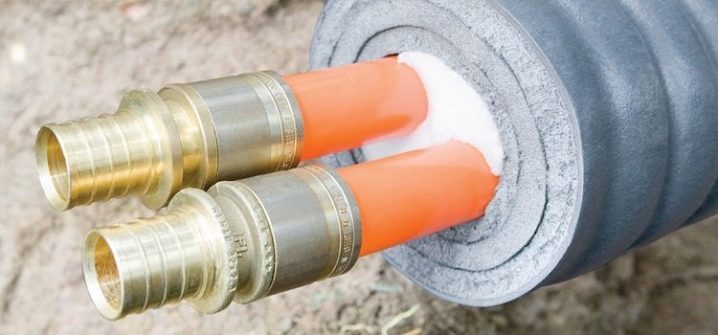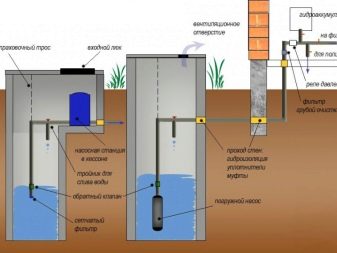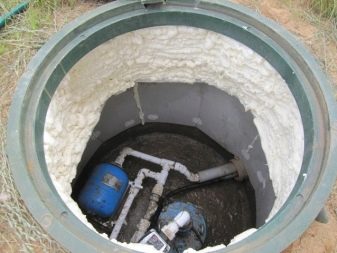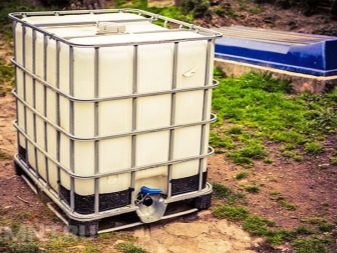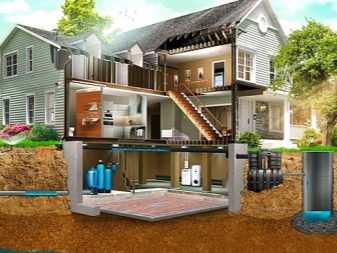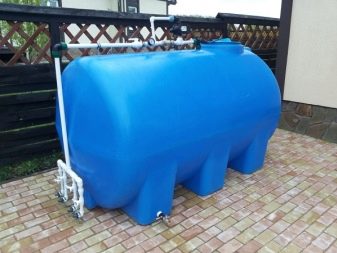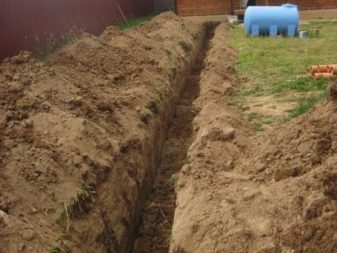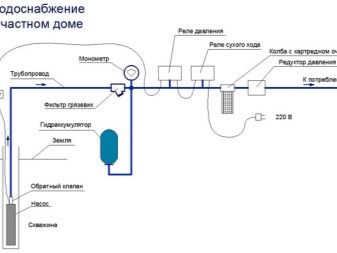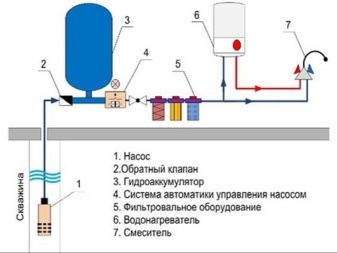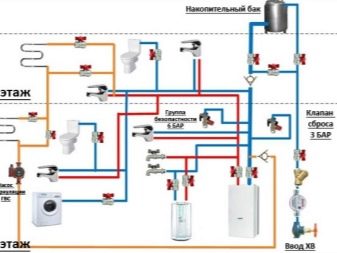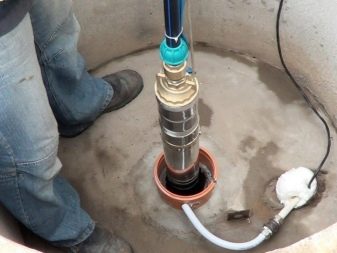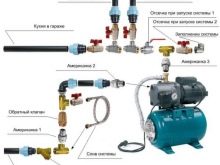Water supply sites: methods and organization of installation works

Water supply of private houses and suburban areas is one of the basic needs for a comfortable person’s living. The ability to use a shower cabin, a full toilet, kitchen sink and household appliances is an essential attribute of a 21st century dwelling. And even if your summer cottage has only a summer house without running water, then water is necessary for watering the garden, summer shower and washing hands after gardening.
Modern technology allows you to automate the flow of water through pumps from wells and reservoirs,but for permanent residence an autonomous water supply system is needed, capable of providing several points of water intake on the site at once.
Special features
To get to the issue of water supply was easier, you should start to understand the system with elementary elements.
The simplest construction of a water supply system at the dacha will consist of:
- water source;
- pump;
- pipes;
- fittings;
- filters.
More complex systems can be complemented by automatic installations, regulators and sensors. The whole structure is divided into underground and ground part. It is necessary to leave access to the latter free in order to be able to carry out timely prevention and troubleshooting.
Sources
For country farming and irrigation it is possible to use water from nearby reservoirs, rivers, and even full-flowing ravines. This has its advantages, because the water in them is warming up in the summer months, and it does not have to be further defended in tanks.
But this method is unacceptable for the use of water at home and drink. Therefore, when it comes to water supply of the site, there are only two ways of supplying water: from centralized and alternative sources.
Centralized sources - the easiest way to spend in a private house plumbing. Central water supply, as a rule, is settled in the process of laying modern cottage settlements or is present in close proximity to private houses within the city. In this case, the work on water supply will consist in notifying the local administration, obtaining a permit, creating a trench and posting pipes from the central highway to the right places of the site. But often the central water supply system has a minus in the form of instability of water supply or insufficient pressure in the system.
Alternative sources help where it’s not expected from the local administration. Yes, and the presence of its own water source on the site helps not depend on interruptions in water supply and to avoid a drop in pressure power while distributing to all sites simultaneously.
An alternative way to obtain water are wells and boreholes. Each of these species has its own characteristics, and preference is given to one of them depending on the level and volume of groundwater on the ground, the composition of the soil, and the depth of their freezing.All these nuances should be clarified in the hydrometeorological service for the area.
Well
People used well water from time immemorial, and still this method remains relevant if the groundwater level passes close to the surface of the earth. Digging a well and its arrangement is not too troublesome, compared to other water supply systems. Installation of the well can be ordered "turnkey" in a specialized company. In this case, qualified craftsmen themselves determine the level of groundwater in the area, the optimal location of the object, the predicted amount of filling the well.
If you carefully examine the theoretical side of the issue, you can cope with the construction of the well yourself. To do this, you will need to dig a pit not deeper than 10 m, install concrete rings, ensure sealing between them, think over the convenience of access to water and safety.
From the well, water into the house and into the fields of the plot can come through pumping structures.
Well
Well drilling is a demanded and the only possible method in areas where groundwater flows at a depth of more than 10 m.
The well has a number of advantages:
- The deeper the well goes into the bowels of the earth, the cleaner the water and the richer its mineral composition.
- The volume of water will always be enough for home and agricultural needs. There is no need to worry about drying up the spring or leaving the groundwater, as often happens with wells.
The downside of the well method is its high cost, but if you decide to use water supply all year round, the cost of this type of source will quickly pay off.
Arrangement of summer water supply
Summer season involves the abundant use of water for a variety of needs. But if in the cold season nobody lives in the country, then it does not make sense to spend money on a full-fledged insulated water supply system. The optimal solution would be a water supply system designed for private farms (personal subsidiary farms). There are two types of summer water supply systems - collapsible and stationary.
The collapsible system consists of rubber or silicone hoses and is located directly on the ground surface. The hoses are interconnected by metal or plastic adapters, forming a single water system.
Layout scheme covers all the necessary places for irrigation, the central hose is connected to the pump, which is located in the source.When preparing the site for the winter period, the system is dismantled and removed for storage along with the economic inventory.
Fixed plumbing mounted from ordinary metal or plastic pipes, laid on the meter depth in the trench and covered with earth. The system does not require an annual analysis, but it will also be problematic to change its location depending on changes in landscape design. Before the winter season, the water from the pipes must be completely drained so that the frozen liquid does not break the material. To do this, at the design stage of a stationary water supply system, a slope of pipes and a valve for water drainage are provided.
Ensuring year-round submission
To create a full-fledged water supply system, it is necessary to approach the choice of pipes more seriously. Modern systems are equipped with polypropylene or polyethylene pipes. Polypropylene is much more expensive, but it has higher quality and there is no need for components. Assembly is performed using a special soldering device.
In order for the autonomous water supply system to function year-round in our harsh climate,it should be reliably protected from freezing. This is the main nuance, on the basis of which the further design of the water supply system takes place. Compliance with the basic rules will allow to lay a water supply system, which is not afraid of even the Siberian frosts.
The trench depth for pipe laying should be at least 20 cm below the freezing level. If for some reason it is impossible to create the necessary depth, it is necessary to make a high-quality covering cocoon for the pipes.
Methods of pipe insulation may be different:
- As insulating material is best suited cylinders made of polyethylene foam.
- The popular method of pipe laying in polypropylene pipes of larger diameter is popular. In this embodiment, it is possible to organize the supply of warm air from the basement or cellar.
- One of the most expensive ways of warming is a heating cable that is wrapped around the pipes. With the use of cable pipes can be installed close to the surface of the earth. But this method is too expensive, so the cable is used mainly in the area of entry of water pipes into the room.
- The use of glass wool or polystyrene is one of the most budgetary ways of warming.
In addition to pipe insulation, all components of the water supply, and especially the water source, are subject to mandatory insulation. So that the water does not freeze, the temperature should not fall below 0 degrees. To this end, pumping stations are either installed in insulated premises or equipped with a heated caisson. Do not forget that the drainage system also needs warming for the winter period, otherwise the circulation of water supply may be disturbed.
Installation of storage tanks
One of the additional elements of uninterrupted operation of the autonomous water supply system are storage tanks.
Such tanks are installed in cases where:
- The central water supply in the summer community works only during certain hours.
- The volume of a well or well is not enough for one-time use on a large agricultural area.
- On the site there are often interruptions in electricity, and it is not always possible to connect the pump.
- You need a large amount of water heated in the sun for watering and summer showers.
All these problems can partially solve storage tanks.
Storage tanks are made of heavy-duty plastic or stainless steel.
The method of installation of tanks can be top and bottom.
- At the top location, the container is located on the top floor of a country house or in the attic of a private house. Water is supplied directly to several points of water intake - a kitchen faucet, shower, bathroom. For the summer version and irrigation tank can be installed on the roof of the outbuilding, garage, bath. A significant disadvantage of such a system is the reduction in water pressure as the tank is emptied. However, the plus is that water is always in stock, even if it is impossible to connect the pump.
- The lower option involves the installation of the tank in the pit. This design is not limited by the size of the attic or the roof, so it can be of any volume, the heavy weight of the water in the tank is also not terrible for bearing ceilings. The tank is thrown by the ground and can be hidden from the eyes by a lawn or flower bed.
The downside of this location is the need to use an electric pump. Also, the stored water will not be enough to warm up for watering plants. For the winter period, the lower installation of the system must be warmed.
Piping system installation
Before the start of installation work, you should make a project plan, decide on the choice of the diameter and material of pipes, the number of fittings and water intake points.Do not do without the design drawing and the scheme, which will be calculated footage and components. The installation process itself can be divided into two major stages - external and internal:
- External. From the source, pipes are laid in the ready-made trench, they are insulated if the water supply is planned to be used year-round. The pump is lowered into the well or well, the pumping station is insulated either with a caisson, or installed in a heated room. Install the hydraulic controller and pressure gauge, which will maintain and control the pressure in the system.
With the help of the union connect all elements of the system. In the trench next to the pipes lay electrical cable, previously covered with insulating material.
The outlet from which the system will operate, be sure to ground. Fill the pipes in the trenches should be only after checking the operation of the entire system.
- Interior. The layout of the water pipes in the house will depend on the location and number of water inlets. Here, no special tricks are required, and for those who are familiar with the water supply systems of city apartments, the further process of work does not seem complicated.
Tips and tricks
The quality of the water supply depends on many factors: terrain, soil, water level, power equipment, water composition. It is impossible to foresee everything, but it is up to each owner to take care of minimizing negative factors.
To do this, it is recommended to listen to the following tips:
- The best time of year for laying water pipelines is the summer months, since the water level at this time is as low as possible. Subsequently, it will not turn out that, for example, spring waters left the well, and it became empty.
- For continuous operation of the pump, the optimal solution is to choose a model with built-in water sensors.
The pump is turned off automatically, does not continue to operate at idle, does not spend electricity.
- It is recommended to install filters of different degrees of purification in the house, regardless of the source of water. After all, heavy mineral impurities can also be found in the cleanest-looking spring water. Treatment facilities are quite expensive, but if there is water in your area with a concentrated level of iron or impurities, you can put the cleaning system on one water intake point in the kitchen - for drinking water and cooking.
- At the entrance of the water supply to the house, you must install a tap to drain the water. You will need it when servicing or repairing the system. It is also convenient to use the crane for garden needs by connecting a flexible portable hose to it.
- For security, pipes placed under wall partitions in a house are enclosed in a metal or plastic flask.
- The fewer corners and turns the water line will have, the better the pressure will be maintained in the system.
In the next video you will find the installation of summer water at the cottage from the central water supply along the border of the site with a booster pump.

